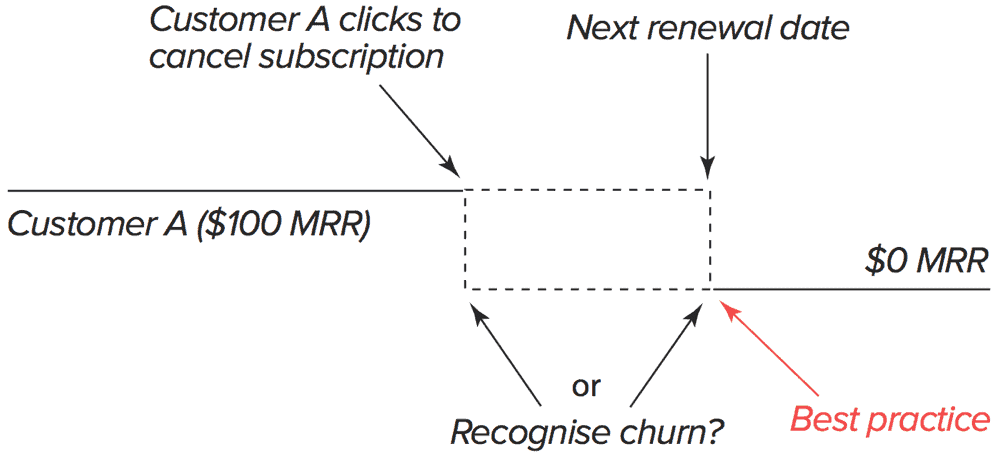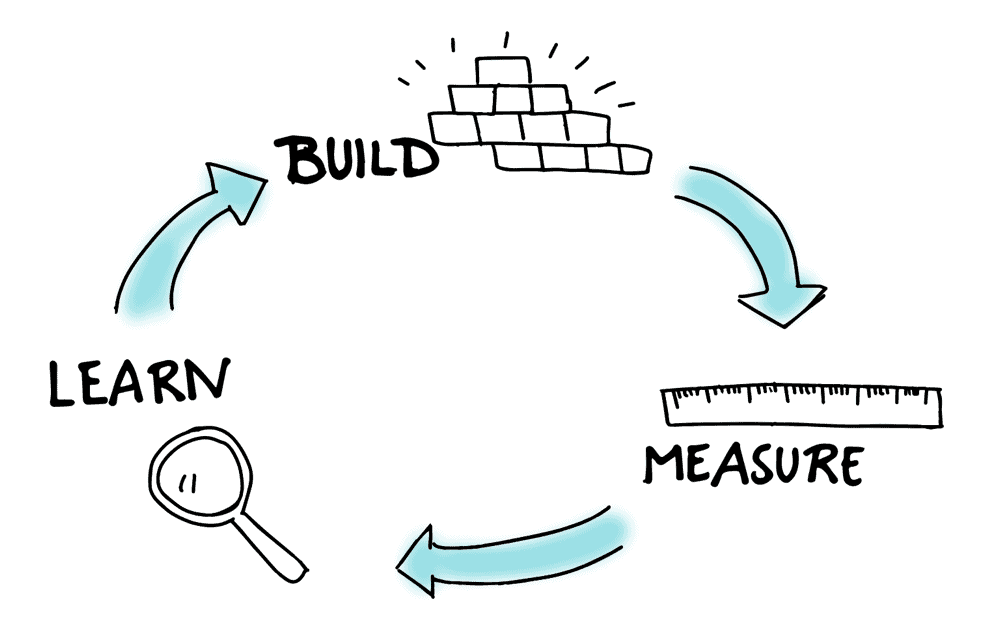Churn is the software-as-a-service (SaaS) company’s archenemy. Losing a customer is not just a one-time financial hit for a SaaS business—that loss of recurring revenue is magnified month after month.
But for SaaS companies, there is a bit of good news when it comes to churn: there is a gap of time between when a customer notifies you that they intend to cancel and when their subscription runs out. These are the customers we’re focusing in on today: those who wish to cancel their service but still have time on their subscription.

In this post we’ll cover:
- Why winning these customers back is important
- Actionable ways to win them back
- Improvements that you can make to avoid future cancellations
Before we begin, we should note that some customers are better let go without a fight. A few examples of customers you wouldn’t want to win back:
- The one that subscribed without understanding that your product wouldn’t really solve their problem—that relationship was doomed from the beginning.
- The customer whose expectations of the level of support they would receive doesn’t match realistically available support levels. Work with the sales and support teams to make sure future customers have an accurate understanding of the support available.
- The customer that has complex needs that your product/service does not meet and does not plan on meeting. These customers can be a pain, requesting features you can’t offer and eating up your support team’s time.
In these cases, it’s best for the both of you to admit your product wasn’t the right solution and cut bait. Freeing up this time will allow your team to focus on canceled customers who have a problem you can resolve.
Why Winning Back Cancelled Customers Matters
Quite simply, it is less expensive to retain customers than to acquire new ones.
“The key here is to think about all of the pros of dealing with canceled customers instead of fixating on the fact that they hit the cancel button. They signed up in the first place. They have experience with your product and a ton of knowledge about it. The product may even still be a habitual part of their workflow. Of course there’s a reason they’re looking to leave, so the clock’s ticking on your opportunity to convert them back to MRR,” advises writer Andrew Tate.
We shouldn’t have to convince you that this “reconversion” needs to happen, so let’s move on to how to do it.
Step 1: Communicate
Savvy companies have an exit survey that goes out to all customers that cancel. The information you can glean from this survey is worth its weight in gold: not only should it tell you about gaps in your product, it should also provide enough insight to win that customer back.
For instance, you might receive a response like “I needed the product to do x but your product would only give me y.” Having such a clear description of what the customer needs could enlighten your account team, informing them about a feature already in place, which may or may not solve the customer’s problem.
More often than not, it isn’t that clear, and you’ll need to reach out to the customer for further information. At this point, you should be calling (not emailing) your canceled subscriber.
“Get your churned customer on the phone. Only do email as a last resort. Having a real conversation with your departing customer is integral to learning something meaningful from the exercise. It’s all about going deeper, asking questions, and coming to a real, detailed understanding of your customer,” says Steli Efti, CEO of Close.io.
After you’ve identified the issue that led to the cancellation, you’re ready to move on to the next step.
Step 2: Align Solutions with Customer Problems

While it may seem obvious to you in the context of this post, this is one step that trips up most companies. If you discover that your canceled subscriber’s issue has to do with pricing, then the solution you offer should tie back into pricing.
Here are some pricing strategies that may help you retain those customers with a foot out the door:
- Upgrade. If the customer canceled because their business has scaled and it seemed your product wasn’t able to scale with them, an upgrade to a higher tier may provide them with the additional features or support they need.
- Downgrade. Conversely, downgrading to a lower tier can help you fit a customer’s budget while still allowing them to use your product. If a downgrade entails a loss of features or support, make sure these elements aren’t vital to the customer’s success with your service.
- Share upcoming feature releases. Efti says that “by offering churning customers a glimpse of what’s coming down the line, you can excite them about future releases. Things that inspire people to stick around are usually features, which save time (e.g., better importing), increase efficiency (e.g., integrating with third parties), or offer additional value for no extra work (e.g., weekly reports).” Be sure to share only feature releases that are guaranteed to come out soon—otherwise you risk the ire of a customer who agrees to stay on but has to wait around for a needed feature.
- “Offer partner services to help them bridge success gaps,” suggests Lincoln Murphy, growth architect at Sixteen Ventures. Murphy advises always giving a customer at least one partner integration option that would allow them to continue using your product rather than canceling outright.
- Allow for short pauses in accounts.If your subscriber’s business is seasonal, having the ability to pause their account during the slow season will mean that they’re already plugged in when that busy time arrives.
- A pricing discount. We don’t recommend this strategy be used often because discounts can weaken your brand perception, but it does have a time and place to win back a customer—read more on our blog “Should Discounting Be Part of Your SaaS Pricing Strategy?”
Consider, too, whether all your tiers and pricing options are clear to current and prospective customers. You may be able to head off some cancellations at the pass with good recurring billing platform that can handle the options you’d like to offer. Maxio can help you there.
Thanks to technology, “particularly more-sophisticated customer databases, companies…draw on information about how people used their service the first time around to craft more-successful win-back offers and to identify and go after the most profitable defectors,” according to Harvard Business Review.
Finally, it is essential to weigh the opportunity costs of the resources it takes to win back canceled customers before they churn. “Knowing what kinds of offers lure back the most customers isn’t enough; the costs and returns of each are important too,” reminds HBR.
Step 3: Integrate User Feedback to Decrease Future Cancellations
In an ideal world, you would retain every customer you talk to, but let’s be realistic: that isn’t going to happen.

Don’t let those conversations and feedback from canceled customers go to waste. This feedback loop is massively important—you can use what you learn from canceled customers as a way to improve your offerings.
Depending on the issues you’re learning about thanks to those cancellation conversations, you may want to look at:
- Improving communication
- Improving customer support
- Improving onboarding
- Adjusting pricing
- Offering trials—or not; other considerations include trial length and whether to request a credit card prior to trial signup
- Investing in marketing to refresh your value proposition
- Reviewing buyer personas and how you’re currently marketing to those personas
- Ensuring your sales teams are setting proper expectations
Modifying your cancellation flows to follow what Murphy describes as “an off-boarding workflow that allows them to cancel in-app if they want but reminds them what they’ll lose if they do and gives them another, compelling option other than canceling.” One tool that can help with cancellation flows is LessChurn.
Wrap-up
Subscription-based businesses need to continually provide value and delight to subscribers because the threat of churn always looms. Thankfully, when a customer cancels, it doesn’t always mean they’re already gone. While these strategies can help you win back many customers, paying particular attention to the feedback of those folks that do churn can help you in the long run.
One thing is for certain: a clunky billing application should not be the reason that you lose a customer. That’s why Maxio is here. With our recurring billing and subscription management platform, your team won’t have to worry about having to build a subscription payment app and can instead focus on those at-risk customers. If you’re looking for a secure solution to process recurring payments, look no further than Maxio. Schedule a conversation with one of our billing experts today!
Related reads:

